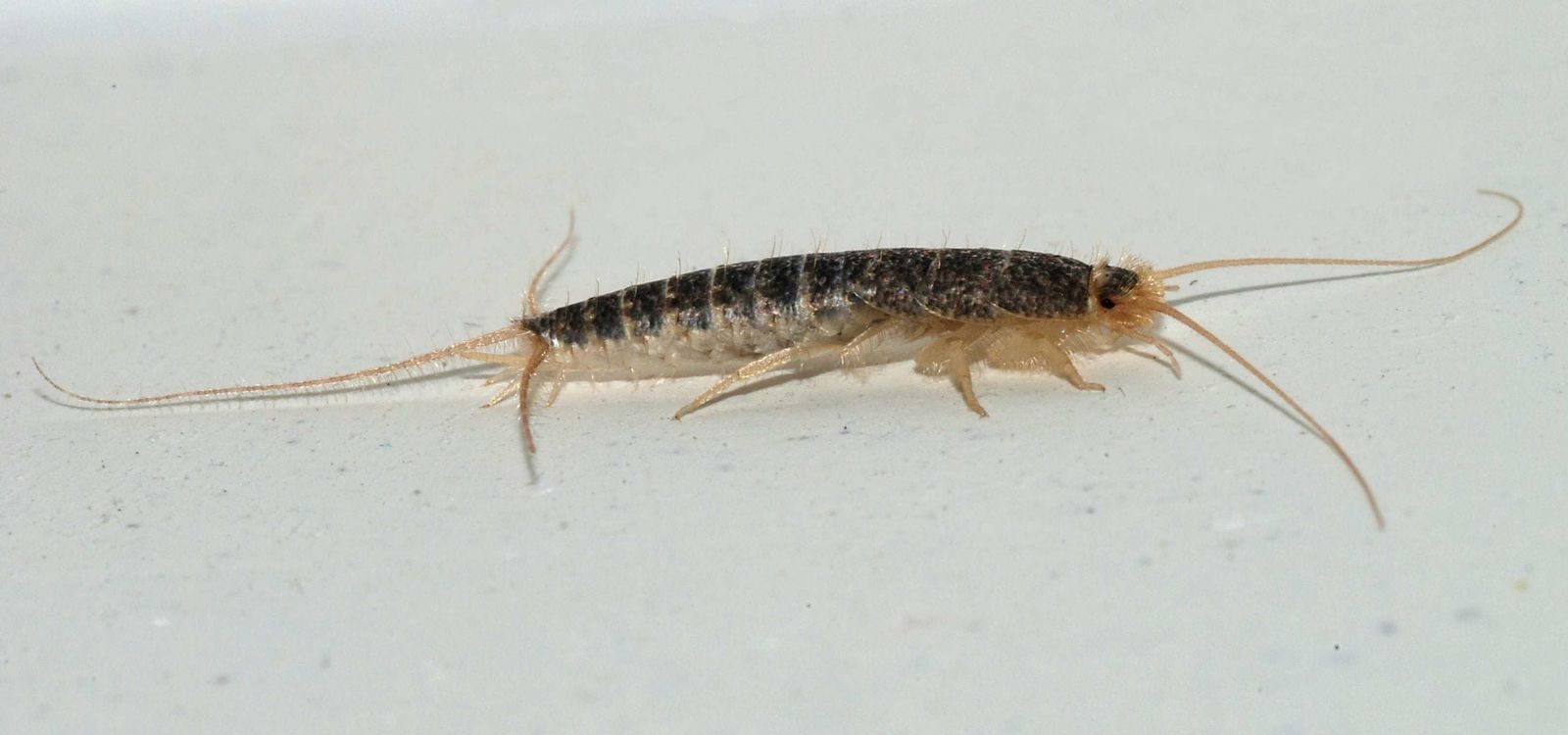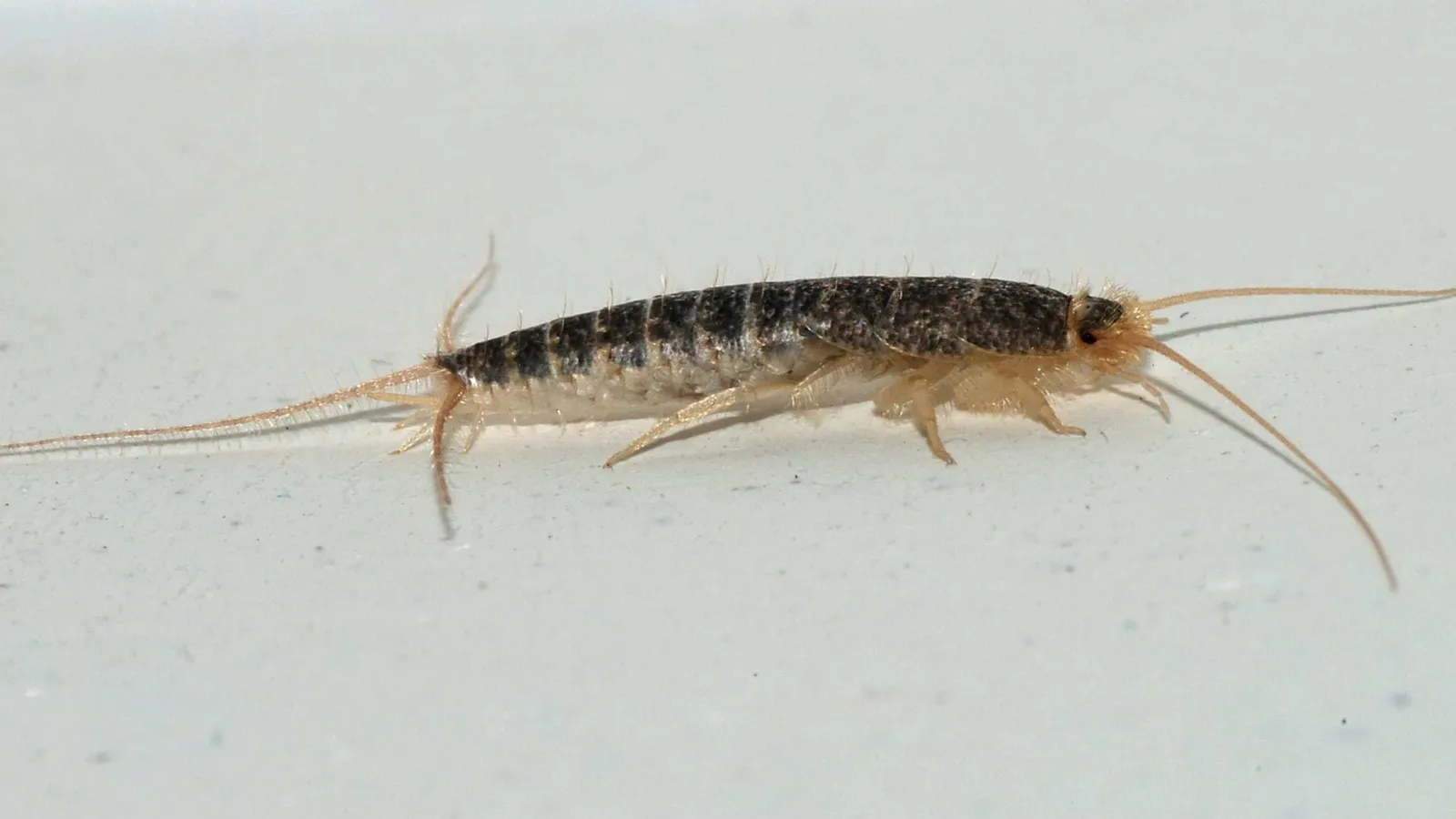The name itself might be a little misleading, because silverfish aren't actually fish at all. These prehistoric pests get their name from their silvery-grey color and their quick fish-like movements.

What are Silverfish?
Silverfish are often confused with firebrats and earwigs, which are both similar creepy-crawlies, but of slightly dark hues and builds.
Silverfish are typically about one half to one inch in length. Their silvery-grey coat develops a metallic shine as they get older.
Silverfish have two cerci and one terminal filament at the tips of their abdomen. Cerci are paired appendages that are usually sensory, defensive, or reproductive organs. They are also completely wingless, and use their antennae to assist in movement.
Silverfish can live for over two years, which is a disturbingly impressive feat in the insect world.
When are They Active?
You and the silverfish likely have very different schedules, so you may not run into them too frequently unless you wake up in the middle of the night.
A common silverfish encounter usually occurs when someone walks into their bathroom at night and turns on their light to find a silverfish in their bathtub. This is somewhat of a prison for silverfish because they struggle to climb out of bathtubs due to their lack of extra appendages. They are poor climbers, but exceptional runners.
Silverfish are very quick, and can outrun the majority of their predators. Seeing a silverfish run in your home is a very unsettling sight that is sure to send shivers up your spine.
They will often scurry off into dark and secluded places. Silverfish are nocturnal, so they prefer to stay hidden during the brighter hours of the day, and will likely only come out when your lights are off.
The perfect conditions for silverfish are dark environments with temperatures around 70 to 90 degrees Fahrenheit, although they can survive in temperatures above 50 degrees.
Silverfish thrive in moist conditions, so they are often found in parts of your home that may be harboring excess moisture. They are often found in bathrooms, kitchens, laundry rooms, garages, cabinets, or near leaks.
Are They Dangerous?
Though silverfish do look dirty and scary, there's no scientific evidence that silverfish are poisonous and are not known to carry any pathogens that cause disease. However, some people may have allergic reactions to their shed scales during their molting process.
Though they may not harm you, they may damage your belongings. Their diet relies heavily on sugar and starches. If they are inside they are looking to munch on things like grains, vegetables, glue, linen and silk clothing, other dead insects, wallpaper, newspaper, and insulation. If a silverfish infestation gets out of control, extensive damage to your possessions can lead to costly repairs.
How Can I Prevent a Silverfish Infestation?
A silverfish infestation is more of an inconvenience and an eerie feeling than an actual health hazard, but no pest belongs in our homes.
Here are some steps you can take to prevent a silverfish infestations:
â¢Get rid of all food crumbs on counters, floors, and furniture. Make sure that all food is properly stored in airtight sealed containers.
â¢Use dehumidifiers to eliminate excess moisture in the air, and make sure all spills are cleaned up and leaks are fixed. Proper functioning vents and fans will also help moisture escape.
â¢Make sure all the crevices, cracks, and openings in your home are sealed and secured. Closing off easy access points to your home is one of the most effective ways to keep bugs out.
The most effective way to deal with silverfish, and nearly any pest problem, is to contact a pest management professional. Breda Pest Management will take the time to personalize a pest treatment plan for your property, and keep your home pest free.
Photo courtesy of Jim Howell at the Center for Urban Agriculture at the University of Georgia



